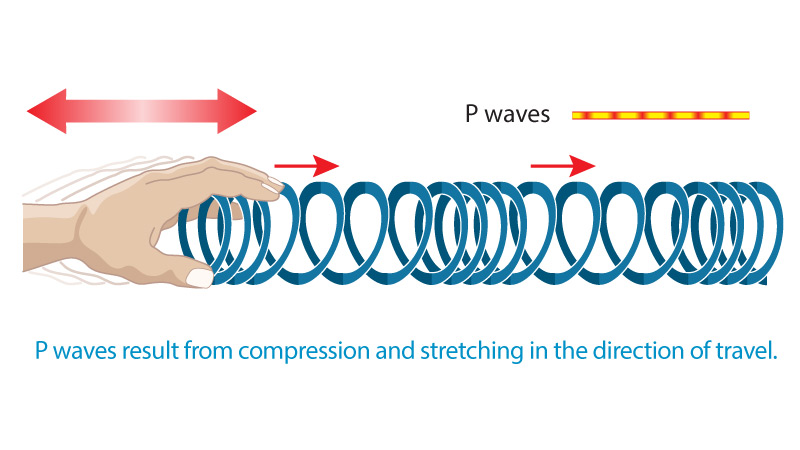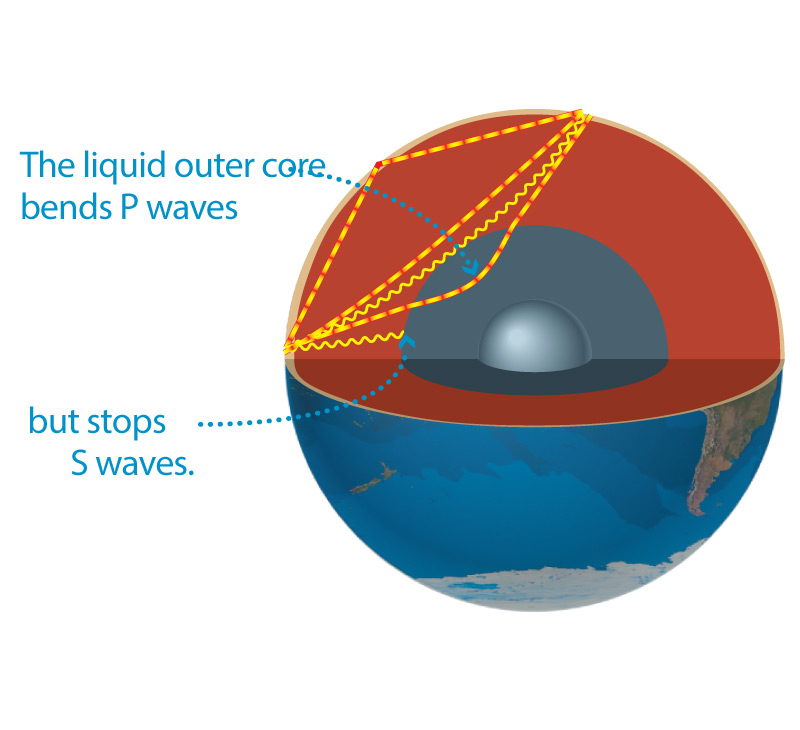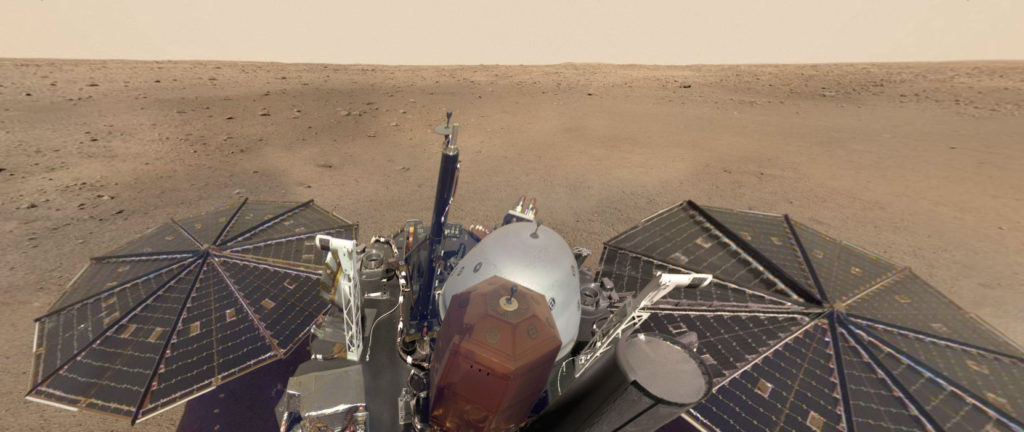Seismic Waves
As discussed in the main text, much of our understanding of Earth’s interior comes from careful study of seismic waves. While the technical details of this study can be complex, the basic ideas are fairly easy to understand.
Seismic waves come in two basic types. The first type is called “P waves.” You can use a Slinky to generate waves that are analogous to P waves (Figure 1) by pushing and pulling on one end of the Slinky (while someone holds the other end still). This generates a wave in which the Slinky is bunched up in some places and stretched out in others. P waves do the same to rock, though on a size scale that is noticeable only because of the shaking you feel as the waves pass by. The P stands for primary, because these waves travel fastest and are the first to arrive after an earthquake. However, it is easier to think of P as meaning pressure or pushing. (Sound waves are another example of a pressure wave.)

The second wave type is called “S waves,” and you can generate an analog to these by shaking a Slinky slightly up and down or side to side (Figure 2). The S stands for secondary but is easier to remember as meaning side to side.

P waves can travel through almost any material—whether solid, liquid, or gas—because molecules can always push on their neighbors. In contrast, S waves travel only through solids, because liquids will simply absorb their side-to-side motions. This simple fact is what allowed scientists to discover that Earth has a liquid (molten) outer core, as follows: After an earthquake, P waves reach the opposite side of the world, but S waves do not. Therefore, the S waves must have been absorbed by a liquid layer. More detailed study of exactly where the S waves reach allows scientists to measure the size of the outer core (Figure 3).

More generally, the speeds and directions of seismic waves are affected by the composition, density, pressure, temperature, and phase (solid or liquid) of the material they pass through. As a result, careful analysis of seismic waves, combined with mathematical modeling, has allowed geologists to develop a detailed picture of Earth’s interior structure. For example, the speed at which P waves travel through the core confirms that the core is made largely of iron and nickel.
Note that, while Earth is the only world for which we have detailed seismic data, we also have a limited amount of seismic data for the Moon and for Mars. The data for the Moon comes from seismic stations left by the Apollo astronauts who visited the Moon between 1969 and 1972. On Mars, the Mars Insight mission has been recording seismic data since it landed in 2018 (Figure 4).
